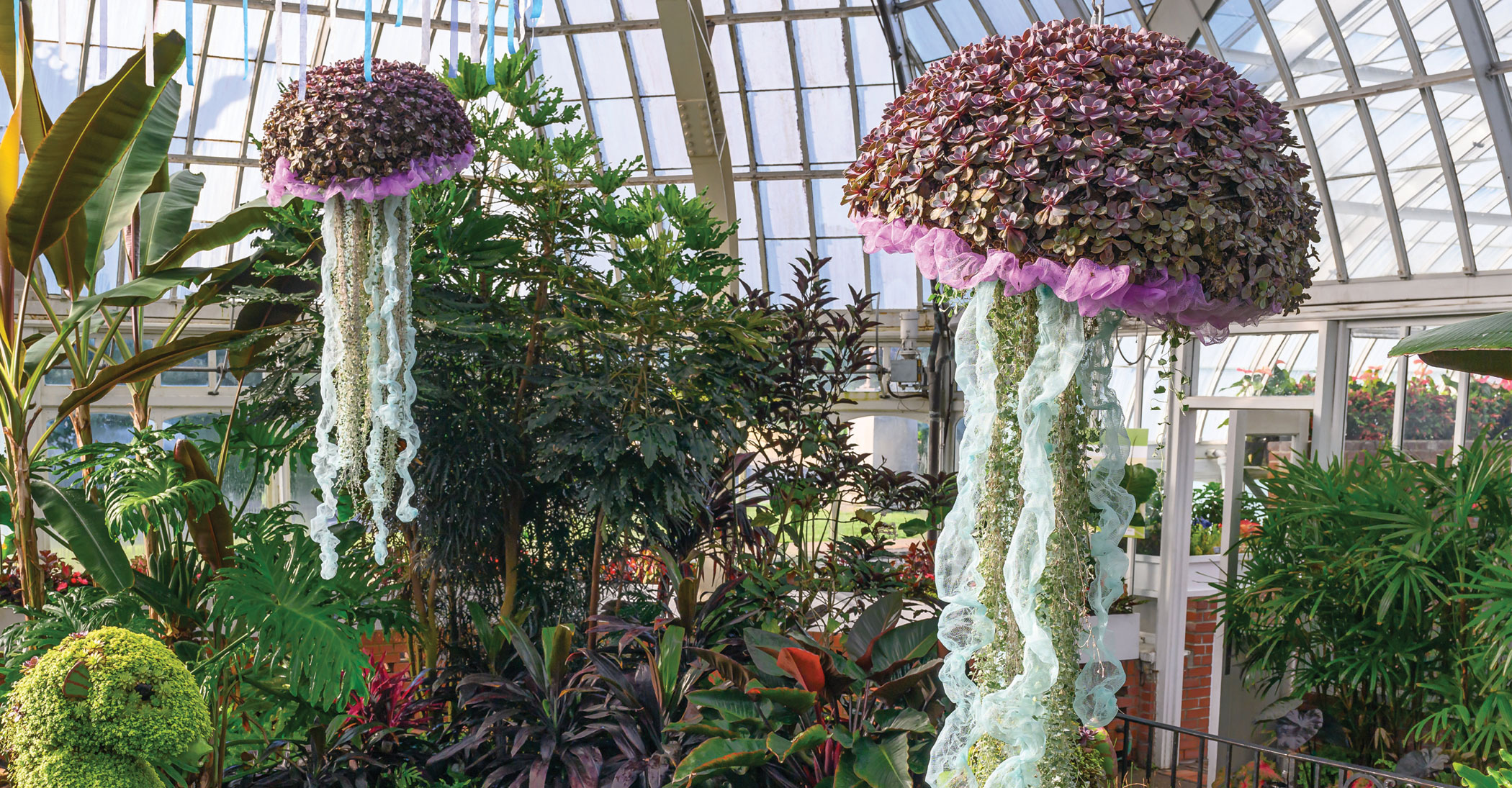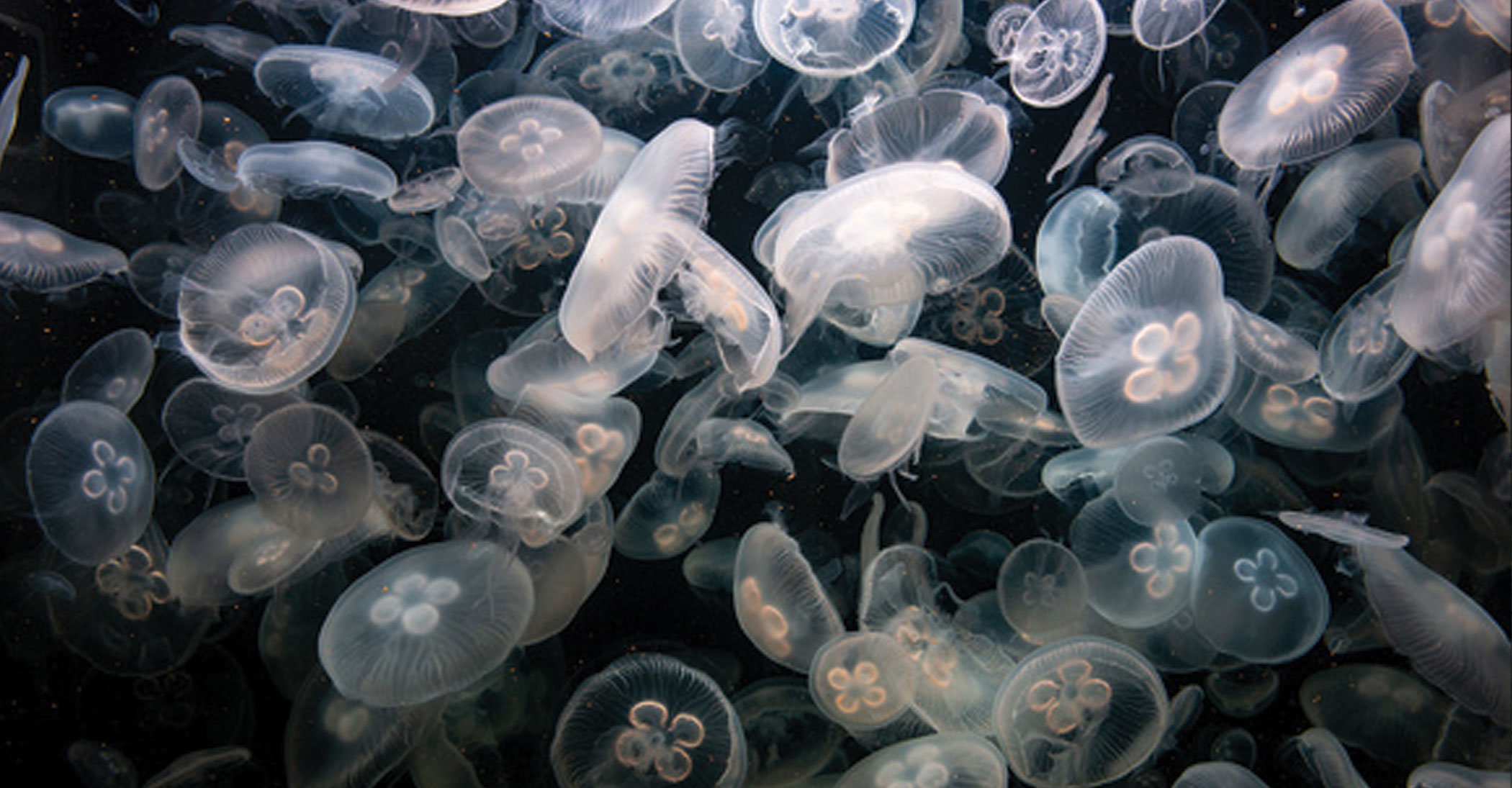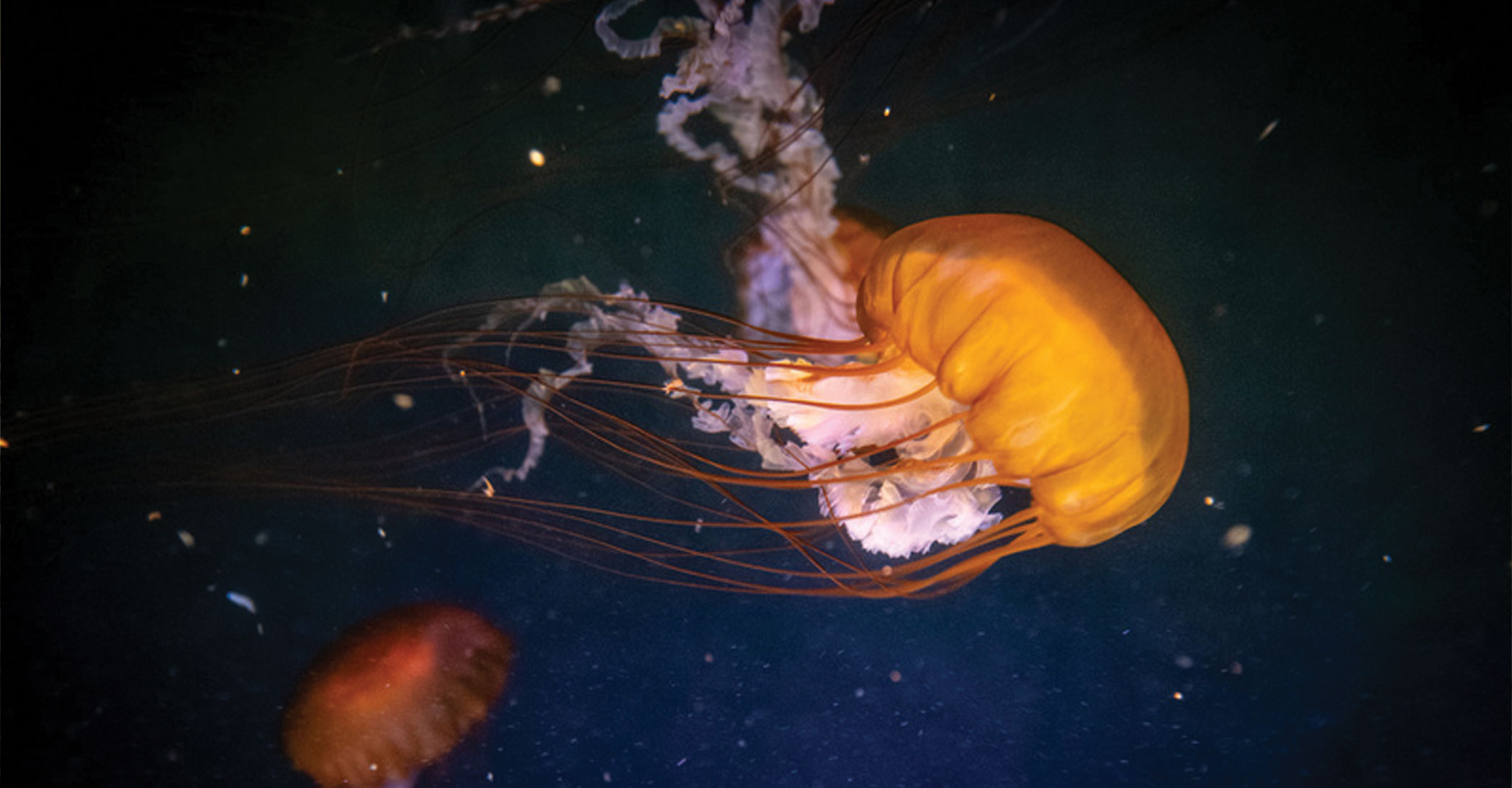Blog

Under the Sea Creations and FINspirations: Jellyfish
This year, Phipps’ Summer Flower Show: Under the Sea, transports you into an underwater adventure like never before, filled with vibrant flora, fascinating foliage and larger-than-life topiaries that bring each scene to life!
These topiaries were handcrafted with dried plant material and art supplies to emulate sea creatures in signature Phipps fashion. With help from the Pittsburgh Zoo & Aquarium, let’s dive right in to learn more about how our topiary fish friends compare to the real-life sea creatures they represent!

Enter the Victoria Room and be greeted by our larger-than-life topiary jellyfish! These jellyfish were created by taking a thirty-inch wire half sphere as the base frame of the topiary to help hold the foliage in place. The dome of the jellyfish, known as a bell or umbrella, was recreated with Pearle von Nurnburgh (Echeveria) and Purple Pearl (Echeveria) were planted along the top of the dome. Silver falls (Dichondra), also known as kidney weed was planted along the bottom of the base with strands of semi-transparent fabric to represent the oral arms of a real-life jellyfish. Once completed, the jellyfish were then carefully suspended over the Victoria pond for all to see!
Luckily, our friends at the Pittsburgh Zoo & Aquarium have helped us learn more about the habitat, eating habits, and more about jellyfish. Read on to learn more about these interesting creatures!

Jellyfish are marine invertebrates that have been on Earth for at least 500 million years! These creatures can be found around the world in a variety of different shapes and sizes, typically ranging between 0.04 in. to almost 6.5 ft. in bell height and diameter!

The bell of the jellyfish will pulsate to provide the creature with propulsion for efficient locomotion. As they propel themselves, these creatures will passively hunt for food by moving or drifting their tentacles, which contain nematocysts or stinging capsules that will kill or stun their prey which can then be brought to its mouth. The pulsating swim of these creatures can also help to pull prey closer within their reach, as the bell expands it will suck in water drawing the prey closer and then after their prey has been attained, they will push the water out propelling them forward.
Stay tuned as we highlight more of our aquatic inspired topiaries and their real-life counterparts bringing their interesting facts, characteristics and more to the surface!
Photos © Paul Vladuchick, Paul A. Selvaggio, Pittsburgh Zoo & Aquarium

